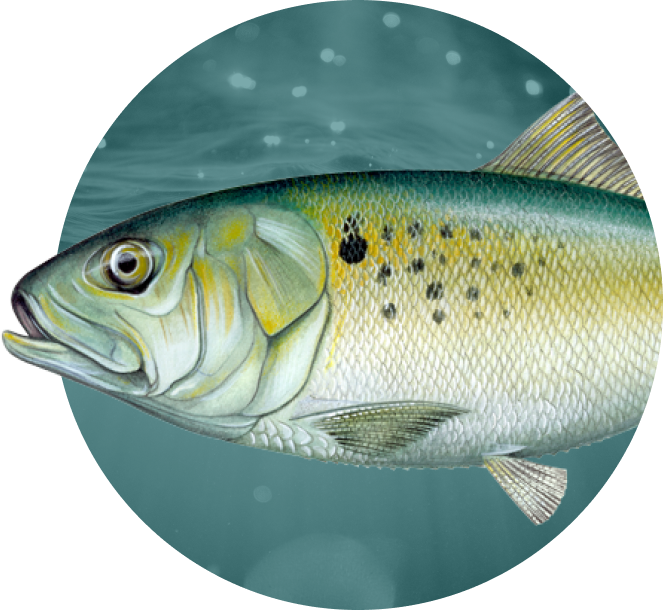Arlington, VA – The Atlantic coastal states of Maine through Florida have scheduled their hearings to gather public comment on Draft Amendment 3 to the Interstate Fishery Management Plan for Atlantic Menhaden. The details of those hearings are attached.
Draft Amendment 3 seeks to manage the menhaden resource in a way that balances menhaden’s ecological role as a prey species with the needs of all user groups. To this end, the Draft Amendment considers the use of ecosystem reference points (ERPs) to manage the resource and changes to the allocation method. In addition, it presents a suite of management options for quota transfers, quota rollovers, incidental catch, the episodic events set aside program, and the Chesapeake Bay reduction fishery cap.
The 2015 Benchmark Stock Assessment Report identified the development of ERPs as a high priority for Atlantic menhaden management. Menhaden serve an important role in the marine ecosystem as prey for a variety of species including larger fish (e.g. weakfish, striped bass), birds (e.g. bald eagles, osprey), and marine mammals (e.g. humpback whales, bottlenose dolphins). As a result, changes in the abundance of menhaden may impact the abundance and diversity of predator populations, particularly if the availability of other prey is limited. ERPs provide a method to assess the status of menhaden within the broad ecosystem context. Draft Amendment 3 provides a variety of reference point options, including the continued development of menhaden‐specific ERPs as well as the application of precautionary guidelines for forage fish species.
Draft Amendment 3 also considers changes to the allocation method given concerns that the current approach may not strike an appropriate balance between gear types and jurisdictions. Specifically, under the current allocation method, increases in the total allowable catch (TAC) result in limited benefits to small‐scale fisheries, and to several states. Furthermore, the current method may not provide a balance between the present needs of the fishery and future growth opportunities. Draft Amendment 3 considers a range of allocation alternatives, including a dispositional quota (bait vs. reduction), fleet‐capacity quota (quota divided by gear type), jurisdictional quota, including a fixed minimum quota for each state, and an allocation method based on the TAC. In addition, the document considers five allocation timeframes including 2009‐2011, 2012‐2016, 1985‐2016, 1985‐ 1995, and a weighted approached which considers both historic and recent landings.
The Draft Amendment is available here or on the Commission website, www.asmfc.org, under Public Input. Fishermen and other interested groups are encouraged to provide input on the Draft Amendment either by attending state public hearings or providing written comment. Public comment will be accepted until 5:00 PM (EST) on October 24, 2017 and should be forwarded to Megan Ware, FMP Coordinator, 1050 N. Highland St, Suite A‐N, Arlington, VA 22201; 703.842.0741 (FAX) or at comments@asmfc.org (Subject line: Draft Amd. 3). If your organization is planning to release an action alert in response to Draft Amendment 3, please contact Megan Ware at 703.842.0740, so she can work with you to develop a unique subject line to enable us to better organize and summarize incoming comments for Board review.
Final action on the Amendment, as well as specification of the 2018 TAC, is scheduled to occur on November 13 & 14 at the BWI Airport Marriott, 1743 West Nursery Road, Linthicum, MD. For more information, please contact Megan Ware, Fishery Management Plan Coordinator, at mware@asmfc.org or 703.842.0740.
